Have you ever seen trees with strange and interesting colors? You’ve probably seen the beautiful rainbow of colors the leaves turn over in the autumn months, displaying gorgeous shades of red, orange, and yellow as the green shades fade away to brown! But what about other colors in the other direction of the color wheel/ Blues, purples, and blacks- are there such trees that exist?Are they even natural? If you’re curious to know more about blue trees and other blue plants, read on to find out more!

Do Blue Trees Exist?
Technically, there aren’t any trees that have definitively blue leaves or a blue trunk. However, there are certain varieties and climates where some trees give the appearance of blue from far away or reflect light in a way that makes them appear grayish, blue, or deep blueish purple.
There are no trees that have properly blue leaves. However, some characteristics can make the green leaves look blue.
The Blue Spruce Tree and the Blue Atlas Cedar are the two most common types of trees with leaves that appear blueish-white. Some plants have tiny hairs on their leaves, making them appear blue.
There are only a few ‘Blue leafed’ trees, but they are truly stunning specimens! Read on for our definitive list of all of the blue trees, along with a collection of blue plants as well!
What Else Can Make A Trees Appear Blue?
We’ve talked about the blue leaves of trees, but what about the blue flowers?
A tree that has blue or purple-colored blossoms may also be a reason why a tree appears to look blue! We have included in our list trees that have blue blossoms as well for this reason.
Trees don’t naturally grow blue flowers. However, varying shades and cool tones may make them appear to have blue blooming flowers.
Here are some trees and plants whose flowers look purple but may look blue! For example, lavender doesn’t grow on trees, rather it grows on plants in fields. Lavender flowers are purple. But some flowers may be purple towards the blueish side.
Let’s get on our list!
1. Blue Spruce
The Blue Spruce is one of the most famous examples of a tree with blue leaves. It is a cone-shaped Christmas tree, it grows sometimes as big as 200 feet tall, and has a very dense crown.
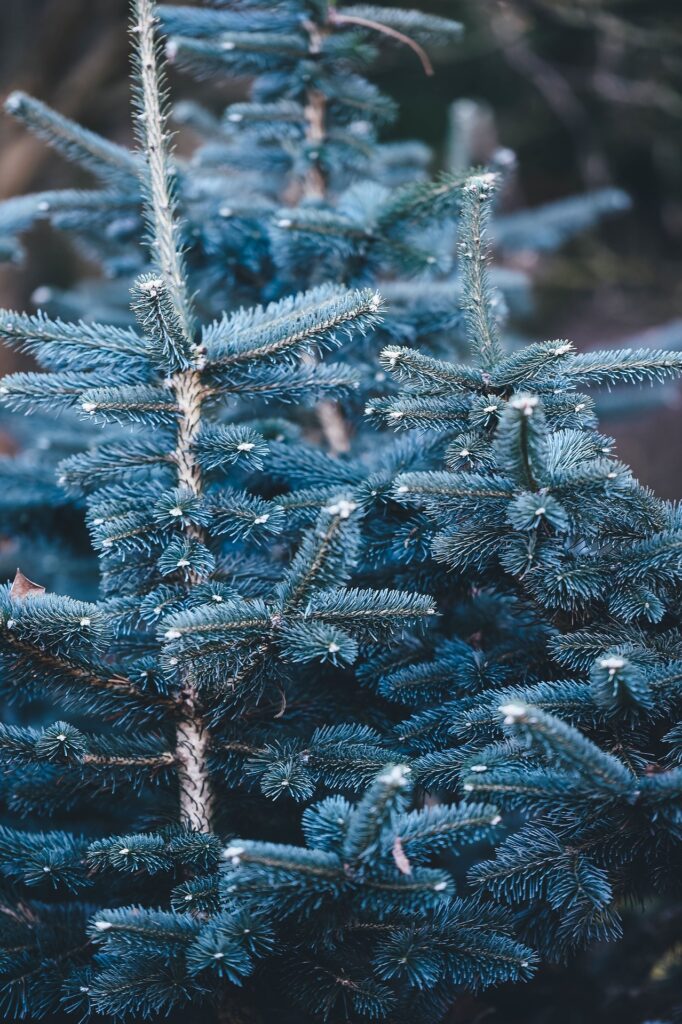
Its foliage changes between bright green and dark green throughout the year. The Colorado Blue Spruce tree takes up to 60 years to fully grow to a 200-foot beast, but these unique trees look magical during the winter when they photosynthesize less and the leaves appear blue-tinged.
2. Blue Atlas Cedar
Blue Atlas Cedar is another example of a tree with blue foliage. They are a type of cedar tree as the name suggests. It’s native to North Africa and Europe, and it grows up to 200 feet high.
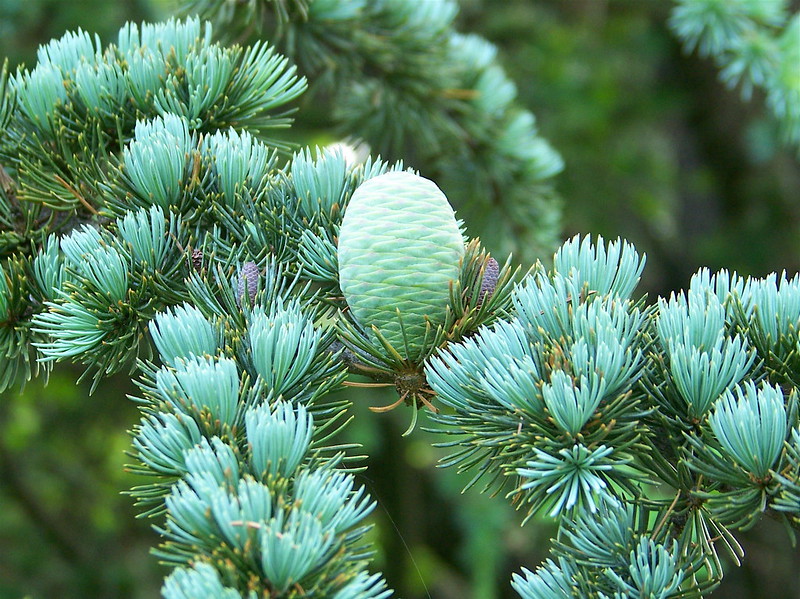
The leaves are oval-shaped and grow in pairs. They change from green to a blue color during the fall season. These otherworldly trees seem mystical, but they are in fact real!
3. Beech Tree
Beech trees are less blue but do take on a green-gray color as they absorb less color from chlorophyll over the autumn and winter months.
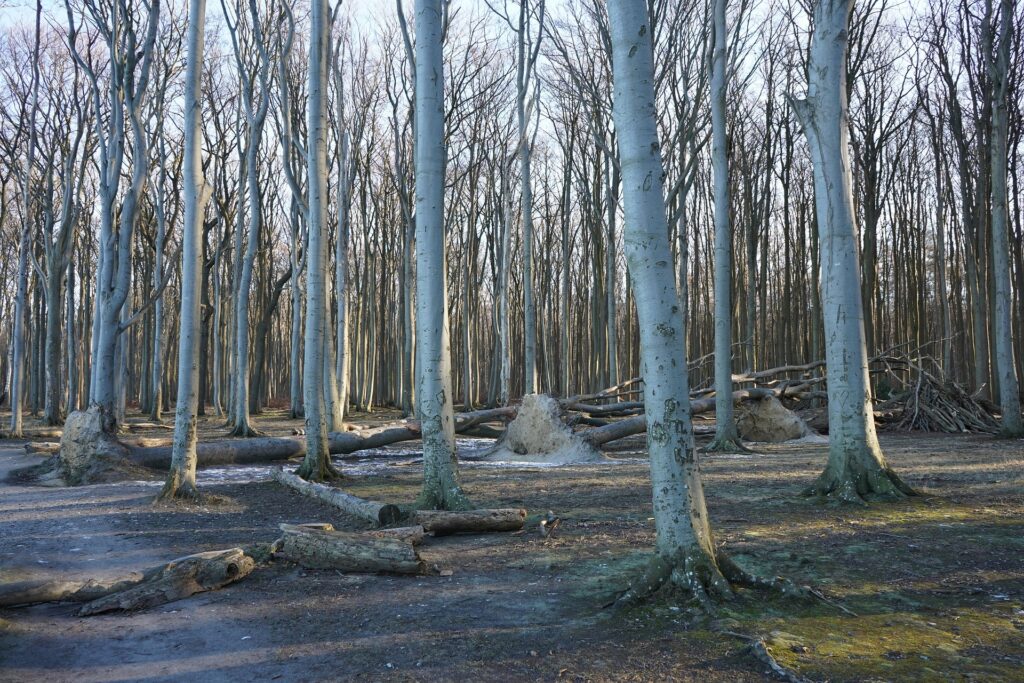
4. Copper Beech Tree
Common beech, also known by its botanical name Fagus sylvatica, or as a purple beech, is a species of deciduous tree native to Europe, Asia, and North America. They have a beautiful purple tinge to their leaves.
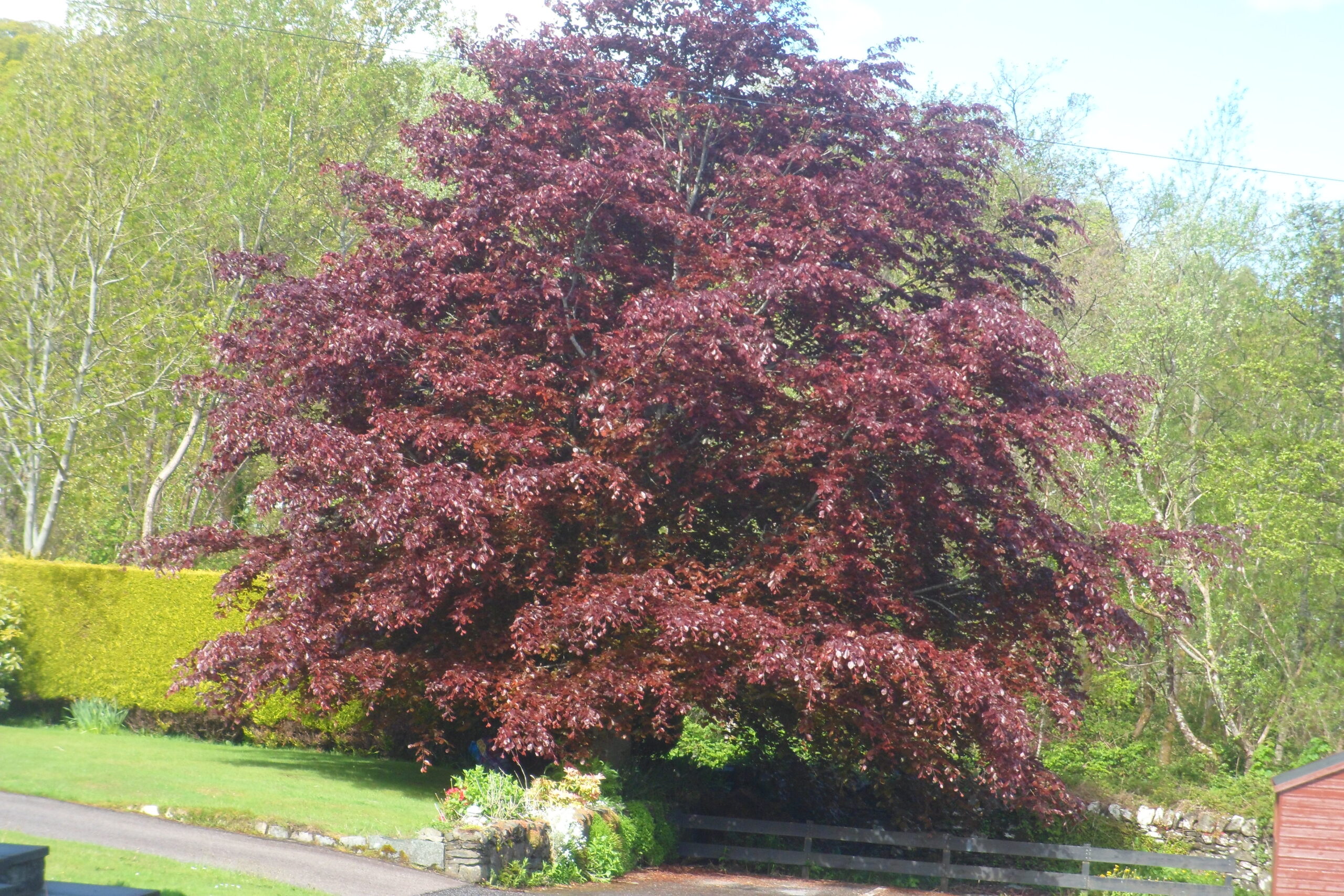
5. Black Cherry
Though these aren’t necessarily blue, they can hold a blue hue in some lights. Wild cherries grow on the edges of forests on alkaline soils. It can be a big tree with beautiful flowers in spring and delicious cherries in July.
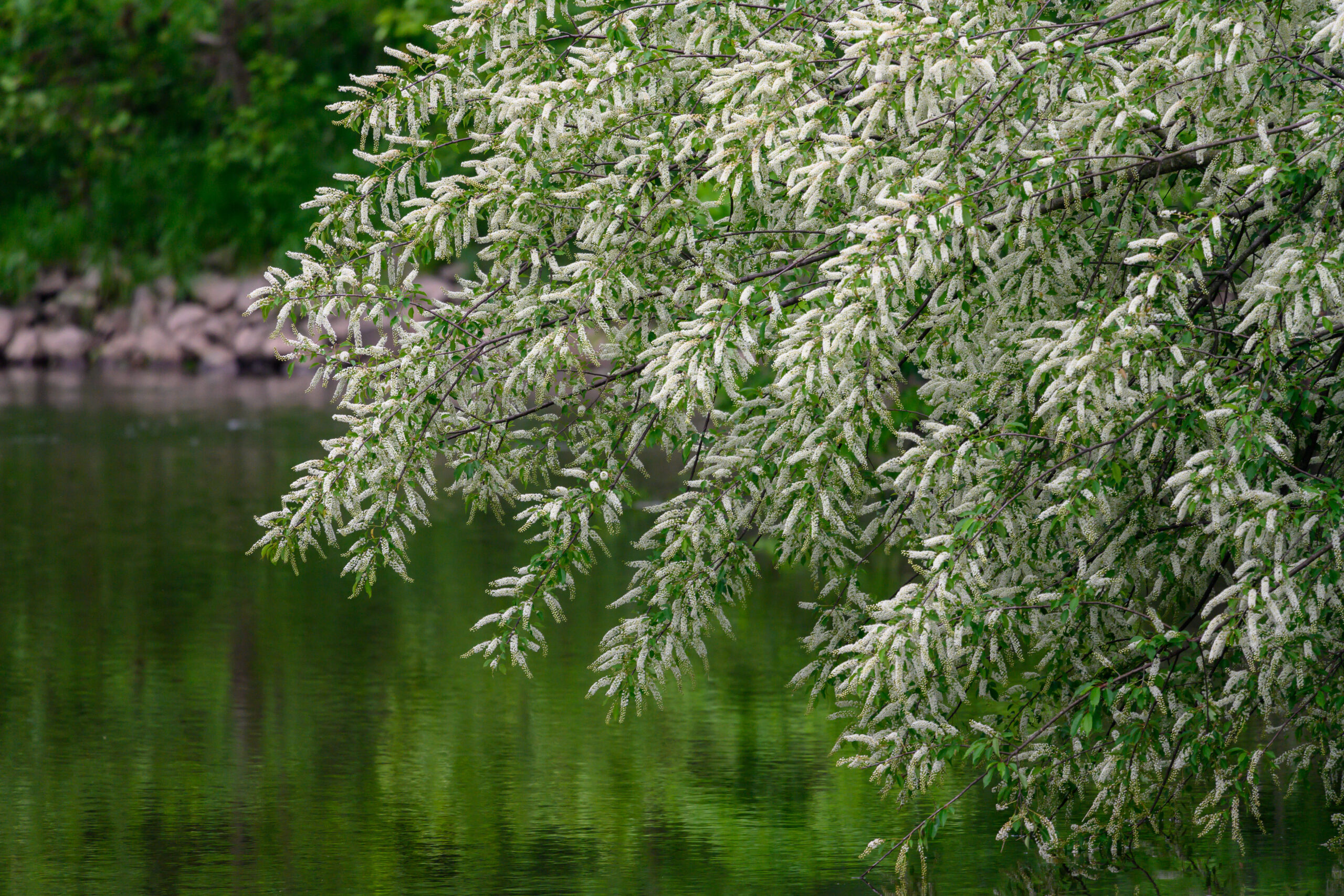
6. Ceanothus
Ceanothus is a genus of flowering plants in the family Asteraceae. It contains about 30 species, of which many have blue flowering plants. They are native to temperate and tropical regions of Africa, Asia, Australia, Europe, North America, South America, and Central America.

7. White Birch
The White Birch is a large deciduous tree native to North America and is one of the most common trees in the United States. It grows from sea level up to tall, with an average height of 66 feet.
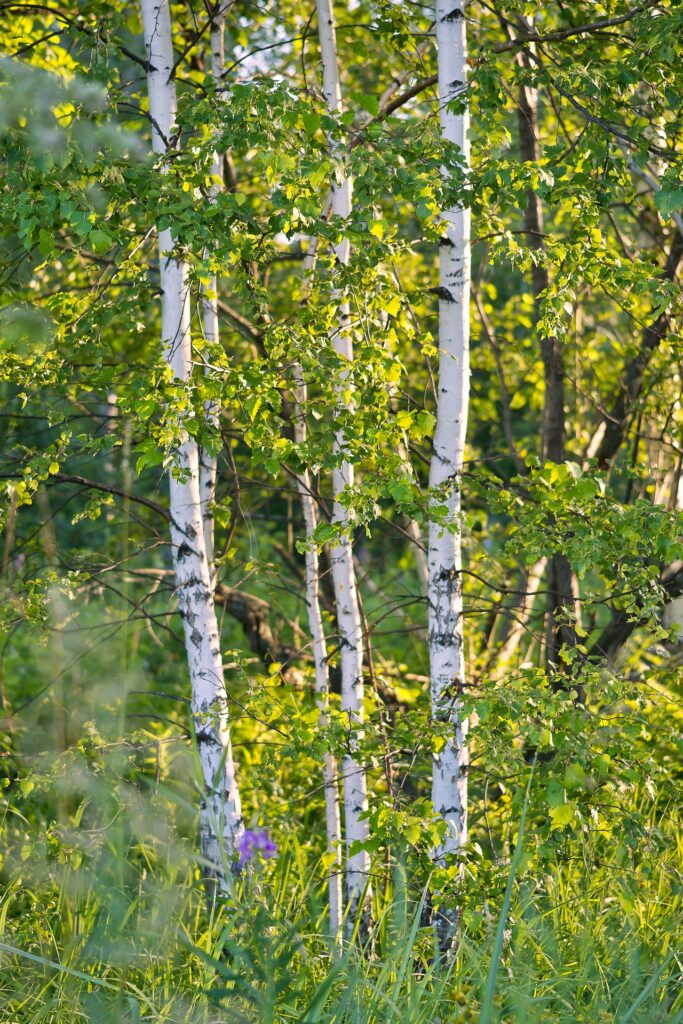
The bark is smooth and can go silvery-white and gray, almost blue streaked in the winter months as it reflects off of the snow.
8. Eucalyptus
Eucalyptus is a genus of flowering plants in the family Myrtaceae. It contains about 500 species and subspecies, most of which are native to Australia, but some also occur on other continents.

Many of the varieties have a subtle greeny-blue tinge to all the leaves. They make a wonderful plant indoors or outdoors.
9. Whitebeam Tree
The Whitebeam (Sorbus aucuparia) is an ancient deciduous tree native to Europe and Asia. It grows in the wild on acidic soils, often near streams or rivers.

A beautiful silvery-green tree, this is a striking addition to any garden. With 20 to 50 years until maturity, this tree will likely continue to change the aesthetic of your garden for the better for many years to come.
10. Blue Cypress Tree
Chamaecyparis Lawsoniana Columnaris is also known as False Cypress or Lawson’s Cypress.
RELATED: Ripe And Radiant: 24 Different Types Of European Trees
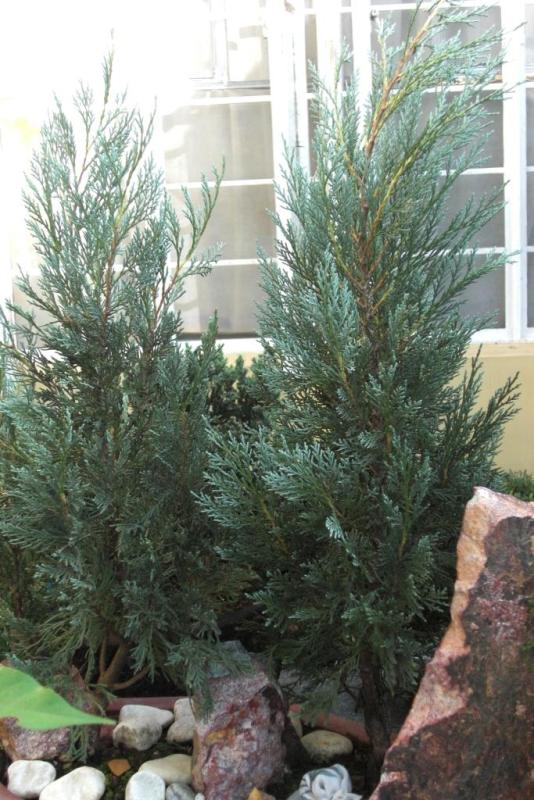
A favorite blue-green conifer, these specimens will provide excellent privacy hedging. The columnar shape of this tree creates a dense screen, the interesting color, and the fragrant scent makes it one of the most popular conifers.
11. Silver Birch
Silver birch, as the name suggests, has a white, silvery-blue peeling bark on the trunk. The twigs are slender and often pendulous. It is a species of tree in the family Betulaceae, native to Europe and parts of Asia, though, in southern Europe, it is only found at higher altitudes
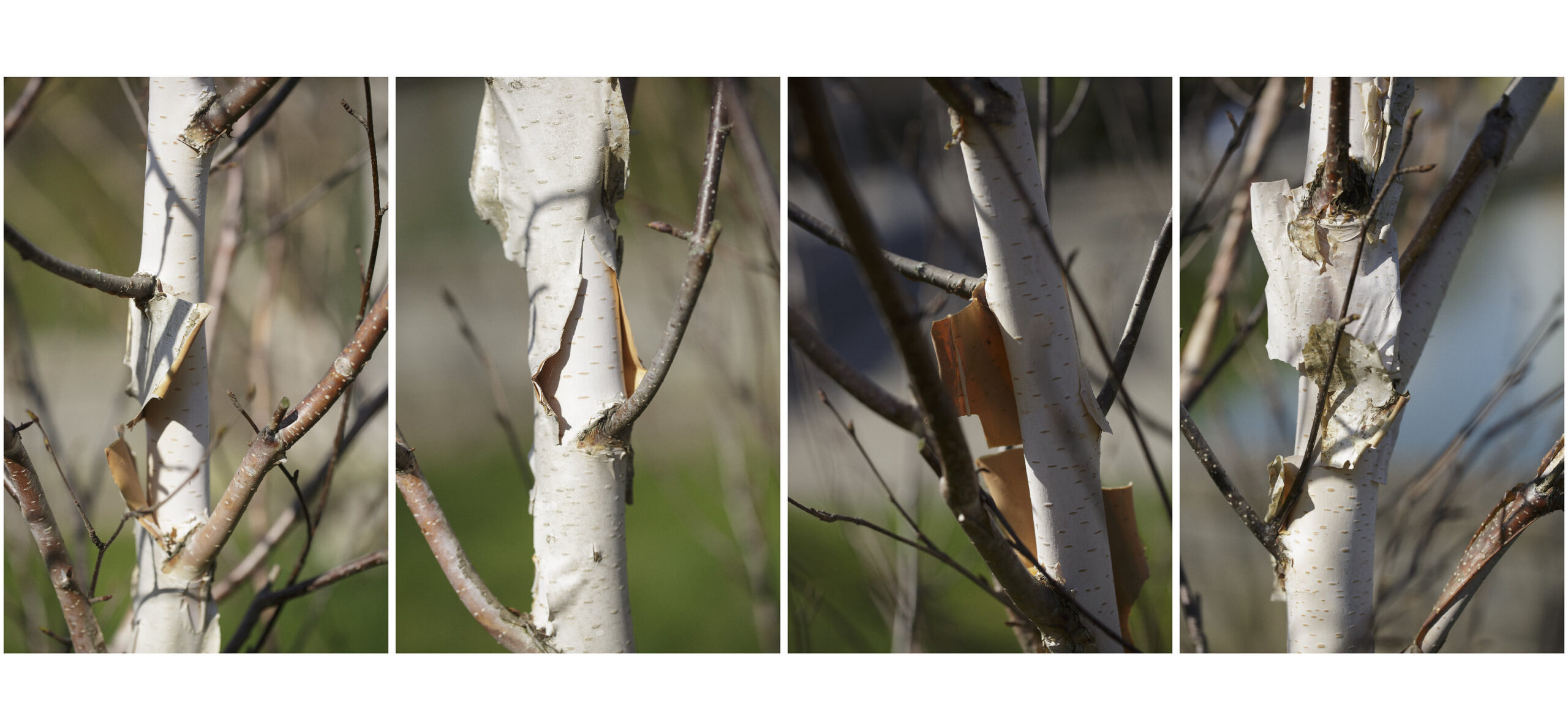
12. Acacia
Some members of the Acacia genus, all native to Australia, have silver-gray foliage that can look blue in certain lights. This small evergreen grows to 20 feet and tolerates a range of conditions, which can alter the appearance of the leaves throughout the autumn and winter.
RELATED: Asili Ni Nzuri! 10 Different Types Of African Trees

How Do Trees Get Their Colors?
Trees get their colors from different things. For instance, the leaves of many trees change color depending on the time of day. This is called diurnal variation.
In addition, trees will often change their colors based on the seasons. In springtime, when new growth begins, the leaves will be bright green. As summer approaches, the leaves will begin to develop deeper hues of green. Finally, as fall arrives, the leaves will start to take on various shades of red, orange, yellow, and brown.
In addition to these seasonal variations, trees may also change their colors based on how much sunlight they receive. Sunlight causes chlorophyll to produce energy. When the amount of sunlight increases, so does the production of chlorophyll. This results in the leaves taking on more vibrant hues of green.
Some trees have leaves that turn completely white in wintertime. Other trees have leaves that stay green all year long. These are known as evergreen trees. The leaves of deciduous trees change color in autumn and shed.
Why Are Some Trees Blue?
The answer to this question is simple: blue trees are not blue. They’re green, and they turn a slight shade of blue when the leaves fall off in autumn. Most of the leaves on a tree are green, but some are yellow, red, pink, orange, etc.
Some trees may have blue leaves because they contain a certain amount of chlorophyll.
Some plants have a delayed process of greening their leaves, which causes them to lose chlorophyll.
Blue is very rare indeed. The most common colors for lack of chlorophyll include red, violet, or other warm tones. You might be able to expect to see such chlorophyll-deprived shades throughout the fall season.
How To Grow Blue Leafed Trees
If you want to plant a tree with blue leaves, there are several ways to do so. You can either buy a seedling from a nursery or you can purchase an already grown tree.
If you choose to go with a seedling, you’ll need to wait until the following spring before planting your new tree. During the winter months, the seedlings will remain dormant. Once spring comes around, you can plant the seedlings outdoors.
Final Thoughts
Can you get true ‘blue’ trees?
Not really, no! But if you want to grow a tree with blue leaves during the fall season, then you can certainly try. Just remember that these trees aren’t truly blue; instead, they’re just slightly tinted green.
When choosing whether or not to grow a blue-leafed tree, you must consider what kind of environment you live in.
If you live in a very hot climate, then you won’t be able to successfully grow a blue-leafed plant. However, if you live in a colder climate, then you might be able to grow one.
You can find many different types of plants at your local garden center, but the two kinds you should look for if you want a blue tree are Blue Spruce and Blue Atlas Cedar.
We hope you learned something from this article, here are other articles that you can learn from:
Coconut Vs. Palm Trees: Top Similarities and Differences You Need To Know
Golden Leaves? 5 Reasons Why Your Majesty Palm Is Changing Color







